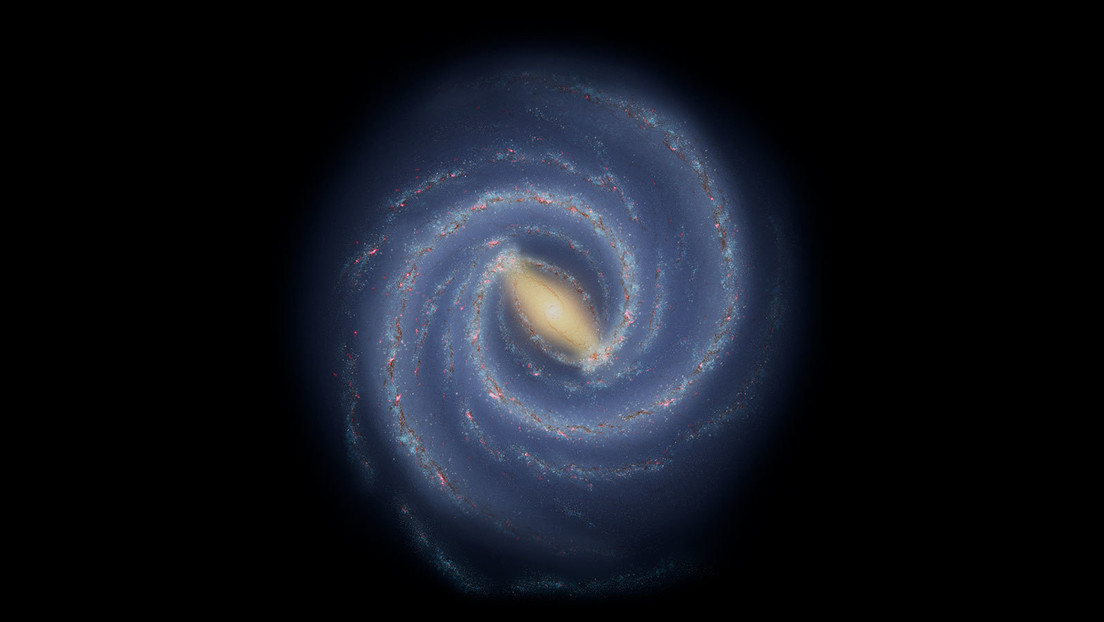Astronomers find a “break” in one of the spiral arms of the Milky Way

Posted:
19 before 2021 01:53 GMT
Scientists have described a disruptive group of young stars and gaseous regions as “a sliver sticking out of a slab of wood”.
Astronomers broadly classify galaxies into three main categories: elliptical, spiral, and irregular, with more than two-thirds of the galaxies they observe listed in the second figure, including our home, the Milky Way.
But while scientists have a rough idea of the size and shape of the spiral arms of the Milky Way, they say they see the entire structure of our galaxy. Which is the challengeBecause the earth is in it. “It’s like standing in the middle of Times Square and trying to draw a map of Manhattan,” they explain From NASA’s Jet Propulsion Laboratory (JPL) in California, USA.
Therefore, discovering some new features of the Milky Way is an achievement in itself. This is the state of the discovery made by astronomers at the Jet Propulsion Laboratory, described in the journal Astronomy and astrophysics, which sheds new light on the finest structure in our galaxy.
Scientists at NASA’s laboratory have discovered a strange “break” in the spiral arms of the Milky Way, which could tell us more about the history of the galaxy. This turbulence, which consists of a group of young stars and gaseous regions, was described by the Jet Propulsion Laboratory as “A sliver coming out of a wooden board“.
Researchers tracked the feature using infrared eyes or heat seekers from NASA’s Spitzer Space Telescope and the European Space Agency’s Gaia mission, which measures stellar distances and motions.
The new study focused on an area near one arm of the Milky Way, called the Arc Arm, home to the famous Pillars of Creation, which are part of the Eagle Nebula. Data collected from Spitzer and Gaia showed that Sagittarius is full of young stars moving through space, at roughly the same speed and direction.
It’s not easy to map the Milky Way when we’re inside it. Thanks to data from our retired Spitzer Space Telescope @that – thatOn the Gaia mission, astronomers discovered a “break” in one of its spiral arms providing insight into the large-scale structure of our galaxy. https://t.co/166ilMaWSupic.twitter.com/jNRLBV8CrR
– NASA JPL (@NASAJPL) August 17, 2021
Michael Kuhn, lead author of the new paper, explained that previous models of the Milky Way suggested that the spin, measured with an angle of inclination compared to a perfect circle at 0 degrees, previously suggested that Sagittarius has an angle of inclination of approximately 12 degrees. New notes show it The angle of inclination of the arc is approximately 60°. However, it is not yet clear why.
Astronomers are still trying to figure out how and why galactic arms form, and the Jet Propulsion Laboratory now says the new study could provide some clues. “This structure is a small part of the Milky Way, but it can tell us something important about the galaxy as a whole,” said study co-author Robert Benjamin.

“Evil coffee nerd. Analyst. Incurable bacon practitioner. Total twitter fan. Typical food aficionado.”

:quality(70):focal(288x128:298x138)/cloudfront-us-east-1.images.arcpublishing.com/metroworldnews/4VWFN4IMGFGQTCCSYSVPIJDM4A.jpg)









